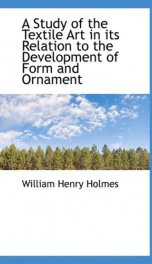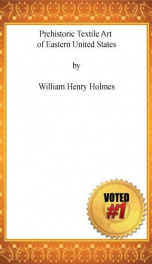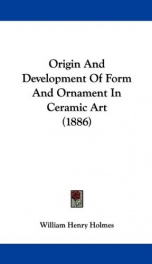Holmes William Henry

William Henry Holmes (December 1, 1846 – April 20, 1933) was an American anthropologist, archaeologist, geologist and museum director. Born in Harrison County, Ohio, Holmes graduated from McNeely Normal College in 1870 and briefly went into teaching. In 1872 he became an artist with the F.V. Hayden survey. After it was absorbed into the U.S. Geological Survey in 1879, he was assigned to work as a geologist in the southwestern United States. He contributed pioneering reports on the terrain and geologic phenomena of Yellowstone Park, and completed early geological reconnaissance work in Colorado. As an artist, he was responsible for illustrative material in an atlas of the Grand Canyon. Holmes was a noted mountain climber, and peaks in Yellowstone National Park and the Henry Mountains of Utah were later named in his honor. In 1875, Holmes began studying the remains of the Anasazi culture in the San Juan River region of Utah. He became particularly interested in prehistoric pottery and shell art, producing published works including "Art in Shell of the American Indians (1883)" and "Pottery of the Ancient Pueblos (1886)". He expanded these studies into textiles, and became well known as an expert in both ancient and existing arts produced by Native Americans of the Southwest. Grand Canyon at the foot of the Toroweap - looking east, sheet VI, in Clarence E. Dutton, The Tertiary History of the Grand Cañon District (Holmes, 1882) Panorama from Point Sublime, illustration of the Grand Canyon by Holmes, published in Clarence E. Dutton, The Tertiary History of the Grand Cañon District (1882), sheet XV. Sunset on the Kanab Desert. From the brink of the Permian Cliff - a Permian butte in the foreground, the Vermillion Cliffs in the distance, and the Jurassic white sandstone in the extreme background. Grand Canyon District, Mohave County, Arizona. (Holmes, 1877) Published works by Holmes include:
do you like this author?
What readers are saying
What do you think? Write your own comment on this book!
write a commentWhat readers are saying
What do you think? Write your own comment on this author!
write a commentBook list

Ancient Pottery of the Mississippi ValleyFourth Annual Report of the Bureau of Ethnology to theSecretary of the Smithsonian Institution,1882-83,Government Printing Office,Washington,1886,pages 361-436
Series:
Unknown
Year:
Unknown
Raiting:
3.5/5
Show more
add to favoritesadd In favorites

Ancient art of the province of Chiriqui,ColombiaSixth Annual Report of the Bureau of Ethnology to theSecretary of the Smithsonian Institution,1884-1885,Government Printing Office,Washington,1888,pages 3-188
Series:
Unknown
Year:
Unknown
Raiting:
4/5
Show more
add to favoritesadd In favorites

Origin and Development of Form and Ornament in Ceramic Art.Fourth Annual Report of the Bureau of Ethnology to theSecretary of the Smithsonian Institution,1882-1883,Government Printing Office,Washington,1886,pages 437-466.
Series:
Unknown
Year:
Unknown
Raiting:
4.5/5
Show more
add to favoritesadd In favorites
Book list

Ancient Pottery of the Mississippi ValleyFourth Annual Report of the Bureau of Ethnology to theSecretary of the Smithsonian Institution,1882-83,Government Printing Office,Washington,1886,pages 361-436
Series:
Unknown
Year:
Unknown
Raiting:
3.5/5
Show more
add to favoritesadd In favorites

Ancient art of the province of Chiriqui,ColombiaSixth Annual Report of the Bureau of Ethnology to theSecretary of the Smithsonian Institution,1884-1885,Government Printing Office,Washington,1888,pages 3-188
Series:
Unknown
Year:
Unknown
Raiting:
4/5
Show more
add to favoritesadd In favorites

Origin and Development of Form and Ornament in Ceramic Art.Fourth Annual Report of the Bureau of Ethnology to theSecretary of the Smithsonian Institution,1882-1883,Government Printing Office,Washington,1886,pages 437-466.
Series:
Unknown
Year:
Unknown
Raiting:
4.5/5
Show more
add to favoritesadd In favorites

Prehistoric Textile Art of Eastern United StatesThirteenth Annual Report of the Beaurau of AmericanEthnology to the Secretary of the Smithsonian Institution1891-1892,Government Printing Office,Washington,1896pages 3-46
Series:
Unknown
Year:
Unknown
Raiting:
4/5
Show more
add to favoritesadd In favorites

Illustrated Catalogue of a Portion of the Collections Made During the Field Season of 1881Third Annual Report of the Bureau of Ethnology to theSecretary of the Smithsonian Institution,1881-82,Government Printing Office,Washington,1884,pages 427-510
Series:
Unknown
Year:
Unknown
Raiting:
4/5
Show more
add to favoritesadd In favorites

A Study Of The Textile Art In Its Relation To The Development Of Form And OrnamentSixth Annual Report of the Bureau of Ethnology to theSecretary of the Smithsonian Institution,1884-'85,Government Printing Office,Washington,1888,(pages189-252)
Series:
Unknown
Year:
Unknown
Raiting:
3/5
Show more
add to favoritesadd In favorites

Prehistoric Textile Fabrics Of The United States,Derived From Impressions On Pottery
Third Annual Report of the Bureau of Ethnology to the Secretary of the Smithsonian Institution,1881-82,Government Printing Office,Washington,1884,pages 393-425
Series:
Unknown
Year:
Unknown
Raiting:
3/5
Show more
add to favoritesadd In favorites

A Study Of The Textile Art In Its Relation To The Development Of Form And Ornament
Series:
Unknown
Year:
Unknown
Raiting:
2.5/5
The textile art is one of the most ancient known, dating back to thevery inception of culture. In primitive times it occupied a widefield, embracing the stems of numerous branches of industry nowexpressed in other materials or relegated to distinct systems ofconstruction --This text refers to the Kindle Edition edition.
Show more
add to favoritesadd In favorites

Prehistoric Textile Fabrics Of The United States, Derived From Impressions On Pottery
Series:
Unknown
Year:
Unknown
Raiting:
3/5
Show more
add to favoritesadd In favorites

Prehistoric Textile Art of Eastern United States
Series:
Unknown
Year:
Unknown
Raiting:
5/5
"Excerpt from the book..."About the year 1890 the writer was requested by the Director of theBureau of Ethnology to prepare certain papers on aboriginal art, toaccompany the final report of Dr. Cyrus Thomas on his explorations ofmounds and other ancient remains in eastern United States. These paperswere to treat of those arts represented most fully by relics recoveredin the field explored
Show more
add to favoritesadd In favorites

Origin and Development of Form and Ornament in Ceramic Art.
Series:
Unknown
Year:
Unknown
Raiting:
4/5
This book was converted from its physical edition to the digital format by a community of volunteers. You may find it for free on the web. Purchase of the Kindle edition includes wireless delivery.
Show more
add to favoritesadd In favorites

Illustrated Catalogue of a Portion of the Collections Made During the Field Season of 1881
Series:
Unknown
Year:
Unknown
Raiting:
3/5
This book was converted from its physical edition to the digital format by a community of volunteers. You may find it for free on the web. Purchase of the Kindle edition includes wireless delivery.
Show more
add to favoritesadd In favorites
What readers are saying
What do you think? Write your own comment on this author!
write a commentGenre
- Books / Indians of North America
- Literature & Fiction / Classics
- Books / Indians of Mexico
- Books / Church and social problems
- Books / United States / History / French and Indian War, 1755-1763
- Books / Botany / United States / Exhibitions
- Arts & Photography / History & Criticism / Regional / Native American
- Books / Federal aid to Indians
if you like Holmes William Henry try:
readers also enjoyed
What readers are saying
What do you think? Write your own comment on this author!
write a commentGenre
- Books / Indians of North America
- Literature & Fiction / Classics
- Books / Indians of Mexico
- Books / Church and social problems
- Books / United States / History / French and Indian War, 1755-1763
- Books / Botany / United States / Exhibitions
- Arts & Photography / History & Criticism / Regional / Native American
- Books / Federal aid to Indians
if you like Holmes William Henry try:
readers also enjoyed
Do you want to read a book that interests you? It’s EASY!
Create an account and send a request for reading to other users on the Webpage of the book!

